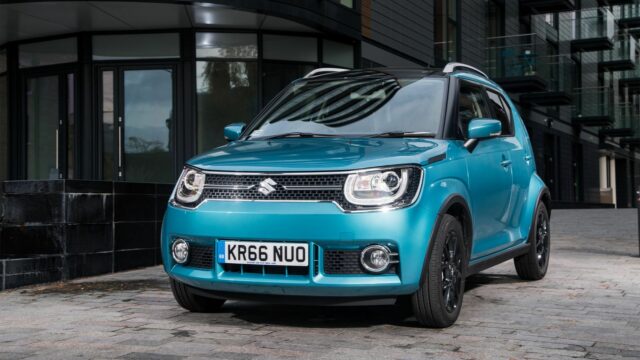Mini cars are now beginning to feature safety systems like braking assist, lane keeping and more. But how does one differ from the other?
















Euro NCAP and IIHS ratings are the first to check before buying a new car, but is that enough? We compare the safest vehicles on the market and their driver-assist systems as part of a series on car safety that will encompass every class and segment on the market.
Getting a five-star rating from Euro NCAP or a Top Safety Pick+ from IIHS tells you that the car you want to buy is safe, or among the safest out there. But when it comes to driving assist features, the differences can be significant. You should always check and try to understand what your specific car does when its systems intervene — this way, you will not be surprised that your "smart" car didn't react when you were expecting it to.
Here is our comparison of assistance systems for the most popular city cars on the European market. Use it as a guide to finding your perfect family car.

The vehicles in the table are ordered based on their sales figures in Europe (2017). Some of them have been tested by EuroNCAP years ago, under the former rules (marked with red in the table). Always check their dedicated files on Euro NCAP's website before buying.

The highest number of driving assistance systems are to be found, surprisingly, on the new Suzuki Ignis, which received a 5-star assessment from Euro NCAP (only for the models equipped with the safety pack). It currently lags in sales on the 12th spot in Europe, but this score should help it climb some places in the rankings. The new Kia Picanto also has some advanced auto-braking (AEB) systems but lacks blind spot monitoring or lane keeping warning features that are, in turn, present on the Toyota Aygo, Renault Twingo, Peugeot 108/Citroen C1 and Opel Karl. As an oddity, Opel Adam doesn't have any AEB or forward collision warning features but does have Blind Spot Monitoring and a self-parking feature.

The current sales leaders disappoint: Fiat 500 is still in the stone age regarding driving assist systems (along with its Panda sibling), while the VW Up! has only frontal collision warning and the mildest AEB system that intervenes just under 30 km/h (its 5-star rating is old and irrelevant today). Hyundai i10 has absolutely no driving assist features, while the Toyota Aygo has a decent package with FCW, AEB City (intervenes between 30 km/h and 80 km/h) and a Lane Keeping warning, but still doesn't manage to get the maximum points from EuroNCAP.

Driving assist systems dictionary
Different systems can have similar names but react in a completely different way. For example, auto braking might intervene under a certain speed, above the same velocity or in a broader speed range. Here's our dictionary for the safety assist systems currently present on the newest cars.
Lane keeping assist vs. lane keeping warning
When you drift from your lane, some cars will just give you an audio signal, others will vibrate the steering wheel or the seat, while others will intervene on the power steering system or the ESP and bring the car back where it should be. Hence the difference between "warning" and "assist."
Automated emergency braking (AEB) – not all auto brakes are equal
Automated emergency braking can seriously reduce the aftermath of an impact or avoid it altogether. Almost all AEB systems have some type of forward collision warning (FCW) that alerts the driver and helps prevent and mitigate front-to-rear crashes – reducing rear-end crashes by a third. If the driver doesn't intervene or a collision is unavoidable, the system kicks in on its own and applies the brakes.
Some AEB systems work only under 30 km/h and are best for avoiding rear-end crashes in the city. Others function at higher speeds and can even bring the car to a halt by activating the brakes if the driver doesn't intervene. The most advanced AEB systems have stop and start functionalities while following the vehicle ahead. Please check the table above to see what speed range applies to each model reviewed.
Blind Spot Monitoring (BSM)
The system monitors the blind spots of the car and alerts the driver if another car or cyclist comes from behind, especially if the driver wants to change the car's direction. Alerts are usually displayed through a blinking LED embedded in the side mirrors. Some BSM work only with cars, others include bikes and cyclists.
Cross-traffic monitoring
A system that uses one or more video cameras in the back to alert you in case another car approaches from your left or right rear corners.
Self-overtaking
The car will try to keep a preselected speed on the highway and overtake the car in front of it whenever this is possible, returning to its lane as soon as it's safe to do so.
Self-parking
Three types of self-parking systems are already available. Two of them require the driver's presence in the car, either managing the car's acceleration and brake while the parking maneuver is executed by the car or just sitting behind the wheel during the process. In advanced self-parking systems, the car will park itself while the driver pushes a button on a remote, from the outside.
Most of these systems are not available on city cars. But you can already find some in the subcompact and compact segments.
READ MORE: Europe, these are your safest cars in 2018
